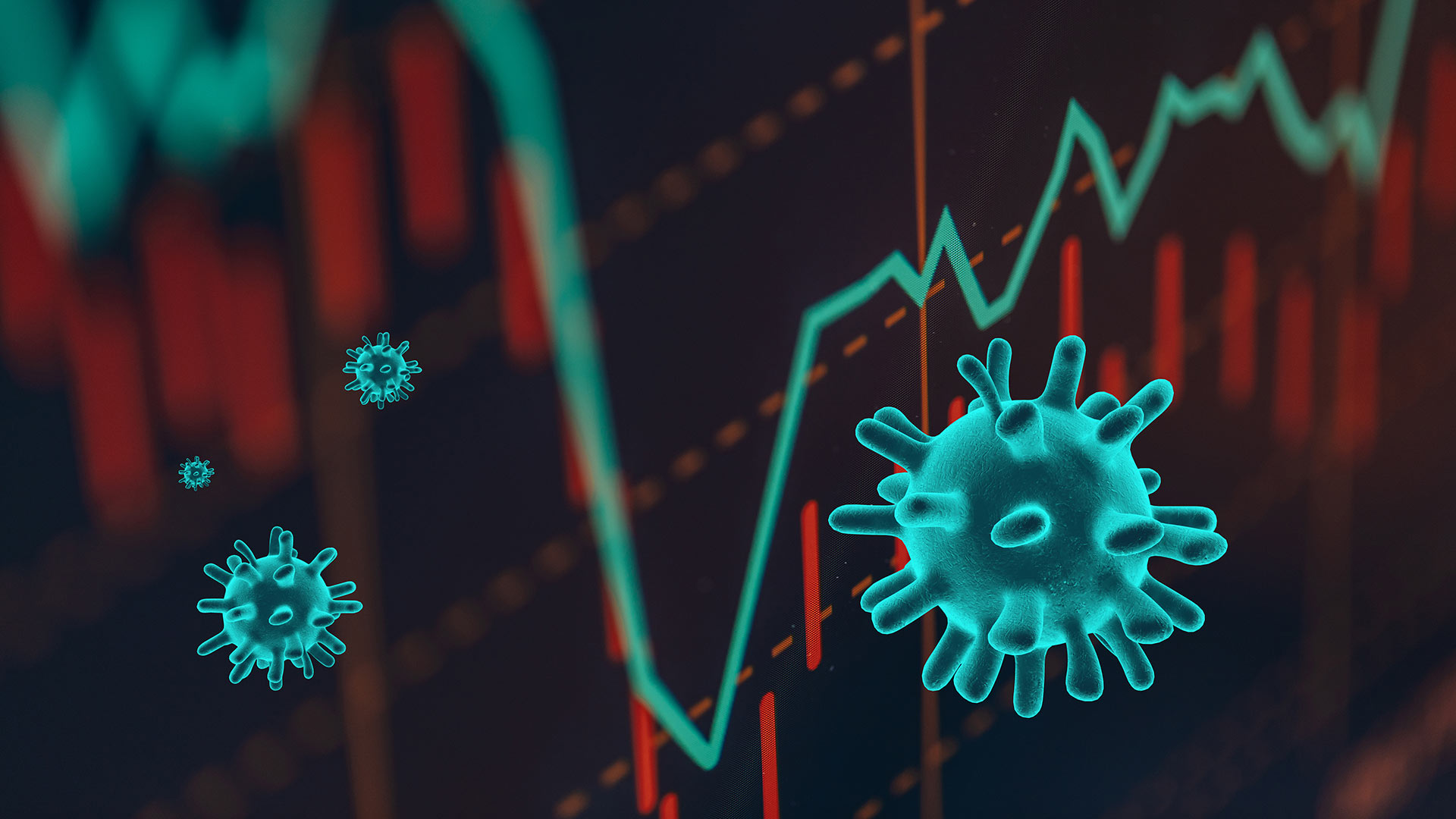With market volatility raging as the COVID-19 pandemic continues, what has been the effect on asset prices for investors and traders? We ask an expert.

Navigating the financial markets is never easy at the best of times. It requires research, planning and an acute understanding of how asset prices react when facing increasingly different circumstances.
The global spread of the COVID-19 pandemic has made life more difficult for investors and traders. Billions of pounds have been wiped off the world’s major indices as a result of ongoing market volatility, while government lockdown measures have affected the productivity of major sectors, including construction and manufacturing.
It is still not known when stability is likely to return to the financial markets. There has been some modest recovery, but such gains are temperamental given the current social, political and economic climate.
For Giles Coghlan, Chief Currency Analyst at HYCM this means one thing: “We’re left pondering an age-old question investors and traders usually ask amidst turbulent conditions – should they radically restructure their investment portfolio, or do they sit tight and rely on the market to correct itself over a long-term period?”
Although there is no clear cut answer to this question, Coghlan says that any response will be influenced by two factors: the assets that make up a portfolio; and the pre-defined risk/return trade-off guiding the investment strategy. “It is also important to understand the performance of different asset classes and to see how these compare from previous experiences in the past. Doing so will allow investors and traders to anticipate future market movements.”
Flight to safety or loss of faith?
One of the first things learnt about trading behaviours is that in times of volatility, investors look to safe-haven tangible assets. These assets are able to hold their price because they enjoy relatively constant demand. Coghlan says the expectation therefore is for precious metals, like gold, to be rising in market value during the COVID-19 pandemic.
“In reality, this has not entirely been the case,” he notes. For example, the price of gold rose considerably throughout January, only to suffer significant loses in March following a fortnight of intense selling and liquidation measures. These loses occurred at a time when COVID-19 was beginning to directly affect the West. “Whilst prices have since rebounded, there is nothing to suggest a second wave of losses is completely off the table.”
One useful way of determining when it is the right time to buy gold is through the Volatility Index, (VIX). This real-time market index provides a 30-day projection of the expected volatility to be encountered by the world’s major indices, measuring future risk and investor behaviour. “Investors interested in gold should consider a purchase when the VIX falls,” notes Coghlan. “As demonstrated in the past, a drop in the VIX is likely to be followed by a rise in gold prices.”
Buying stocks and shares
In the 12 months leading to March 2020, the FTSE 100 decreased in value by 27.3%. These losses were incurred primarily as a result of the economic fallout stemming from COVID-19. What’s more, notes Coghlan, such losses would suggest that there are opportunities for investors and traders seeking to take advantage of low prices to buy individual company stocks or index funds.
“This is particularly true for high quality businesses,” he says. “The FTSE has a strong track record when it comes to recovering from economic crises which is why some investors are looking to purchase undervalued stock in the hope prices will quickly recover.” He adds that it is also important to remember that COVID-19 is a health pandemic, “which means the FTSE prices are likely to rebound a lot quicker once the virus has been effectively contained”.
USD could strengthen if COVID-19 worsens
Whilst the US government has been criticised in some quarters for its handling of the coronavirus outbreak, the pandemic has not dampened investor demand for the US dollar. “At the moment, US dollar accounts for around 70% of currency transactions taking place, and this has largely remained the case in recent weeks despite the number of COVID-19 cases increasing in the US,” says Coghlan.
The numbers are revealing. According to the US Dollar Index (DXY), news of US economy losing over 700,000 jobs in March did not have any serious ramifications for the price of the US dollar, notes Coghlan. “Following the news, investors and traders actually rallied to the US dollar as a safe haven asset. Based on this trend, we are likely to see the US dollar rise in value should the COVID-19 pandemic have a prolonged and negative impact on the wider US economy.”
Tread cautiously, for now
The above observations show just how different asset classes are reacting to market volatility that is being fuelled by the coronavirus outbreak. At the moment, we are not able to predict when or how the pandemic will be contained.
For now at least, investors and traders need to tread cautiously, says Coghlan. “The current situation requires careful planning and an understanding of how different assets are reacting to news linked to the virus outbreak. No doubt, we are in for a few more eventful trading weeks.”